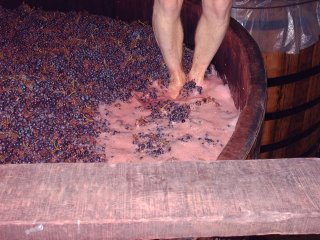I took a load of wine magazines that had been clogging up my desk home last night to read. All was going well until I started reading an article in Decanter written by Clive Coates. Clive is probably THE authority on the wines of Burgundy, for many years he was the writer and publisher of the Vine newsletter, until commitments and ill health forced him to end its run. The essense of the article was the disturbing trend he had noticed of certain vintages of white burgundy to over-oxidise at an alarmingly early age. It particularly affected wines from the 95, 96, 97, 98 and to a certain extend the 99 vintage. Now the events of the last three days where I have come to realise with some surprise exactly how much white burgundy we have been holding in stock to mature, made my eyeball pop out in alarm at what I was reading. I had experienced the exact same thing with many of our white burgs. In some cases I had actually withdrawn several wines (97 Pulignys in every case) from sale after having to open as many as five different bottles to get one bottle fit for service. This was not happy reading.
In essense Clive's research pointed to a series of events that have created a scenario where the wines have been prone to premature oxidation. The first contributing factor was the change in vineyard practice brought about in 1995 which saw many producers drastically reducing the number of treatments in the vineyards. This coupled with a change in the winery to again reduce the amount of "interference" with the wines including in many cases a serious lowering of SO2 dosing, led to more "fragile" wines. But the single biggest contributing factor in his opinion is the generally poor quality of cork. It is around this period of time that many cork producer apparently stopped using chlorine based bleaches to "clean" the corks and started using peroxides, which are supposedly more powerful cleaning agents. In addition to which, many corks used to be coated with a superthin layer of parafin, but now many are using silicon which supposedly allows greater passage of oxygen through the cork. This has greatly contributed to the failure rate of many corks and to this apparent problem of over-oxidised wines. The problem has been gaining much attention on the internet with forums on Robert Parkers ESquires wine site devoted to the problem. There has even been a wiki established at
http://oxidised-burgs.wikispaces.com/ to establish some kind of living record of the problem. I plan to keep a good eye on the site and hopefully wont have to contribute much to it. It amazing sometimes how the internet has created an ingenious tracking solution to what could turn out to be a very serious problem.
Im just in the process of adding some seventy wines to our list just now, the majority of which are white burgs. So there could be some interesting times ahead.
Subscribe to:
Post Comments (Atom)





No comments:
Post a Comment